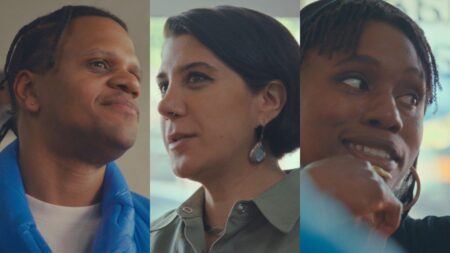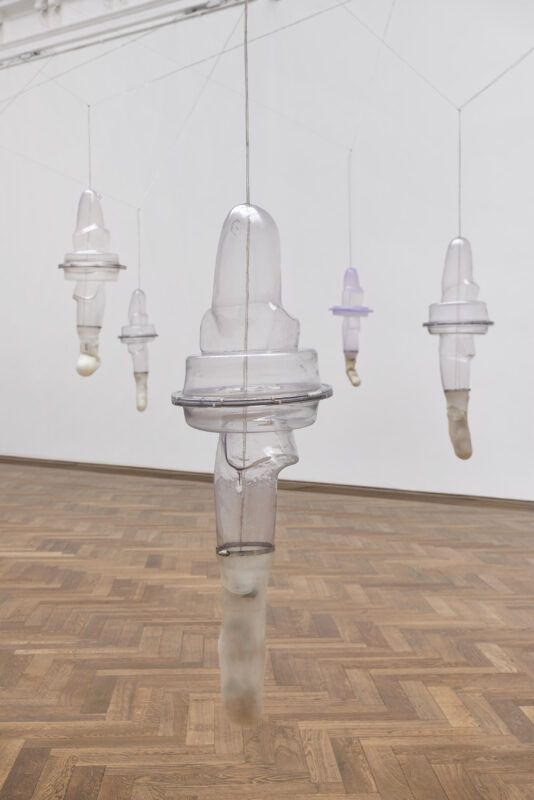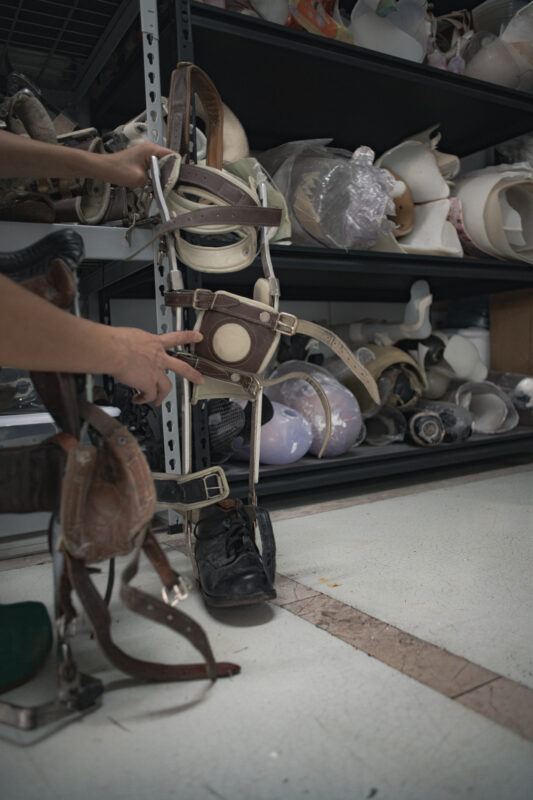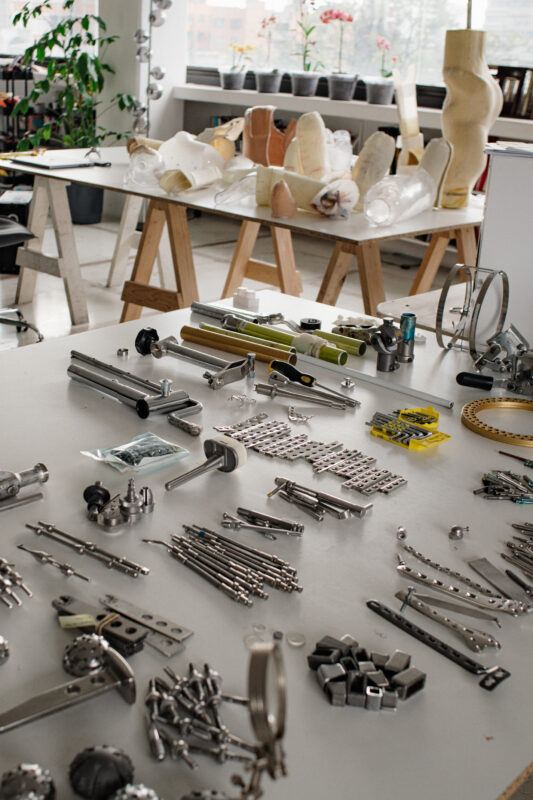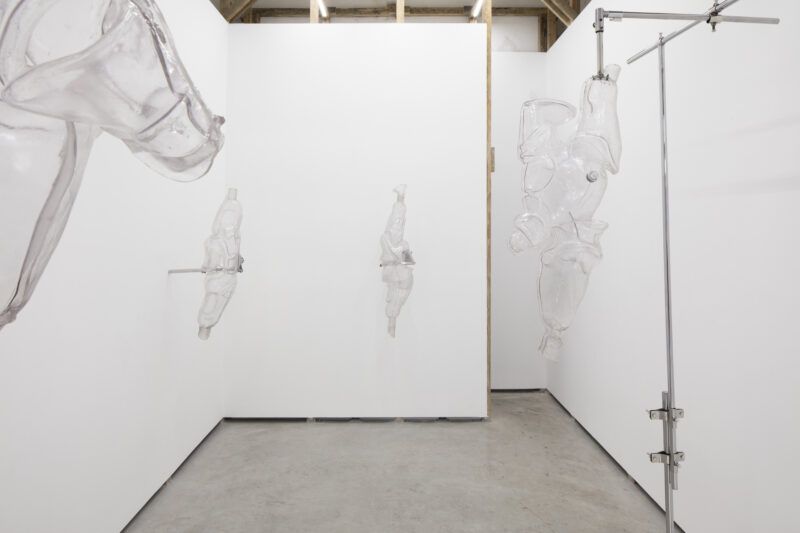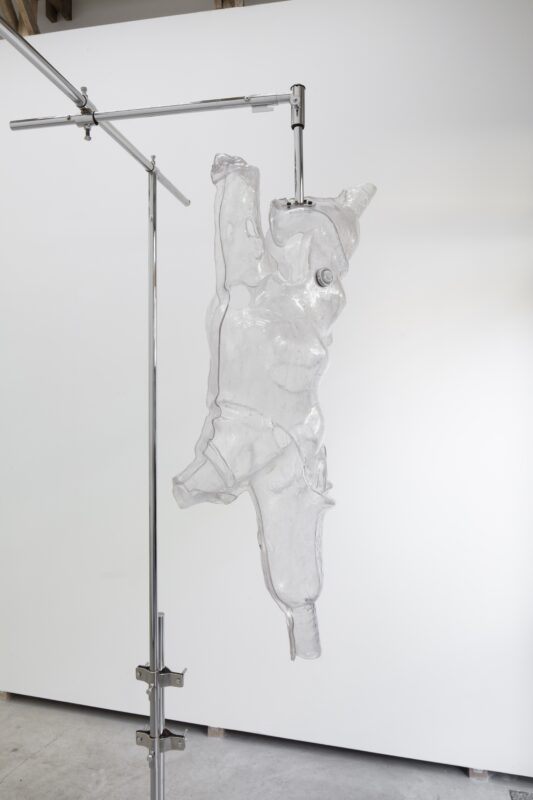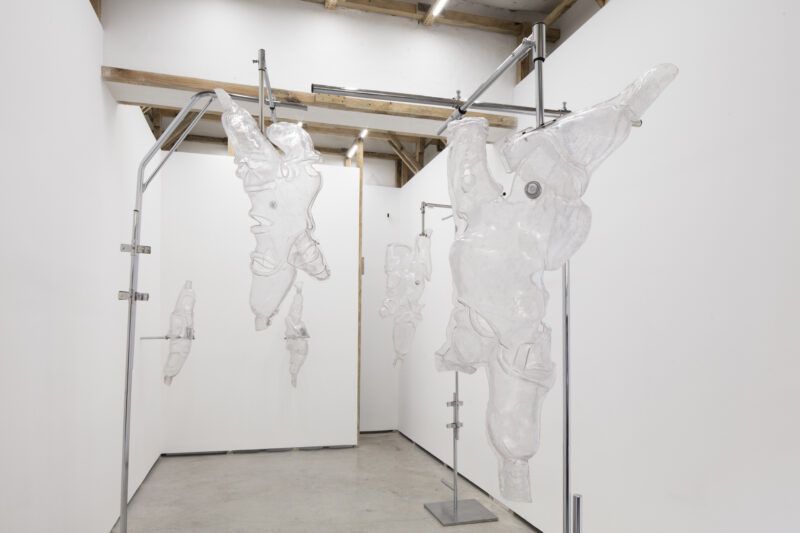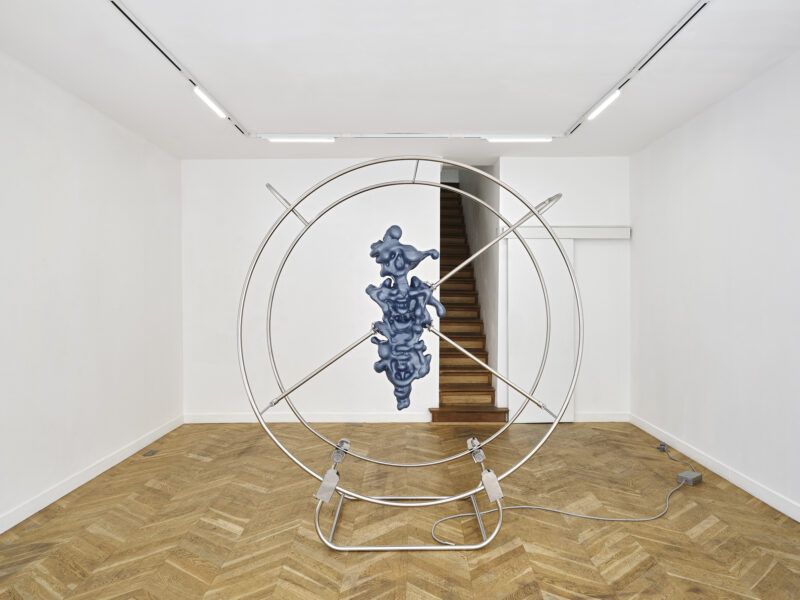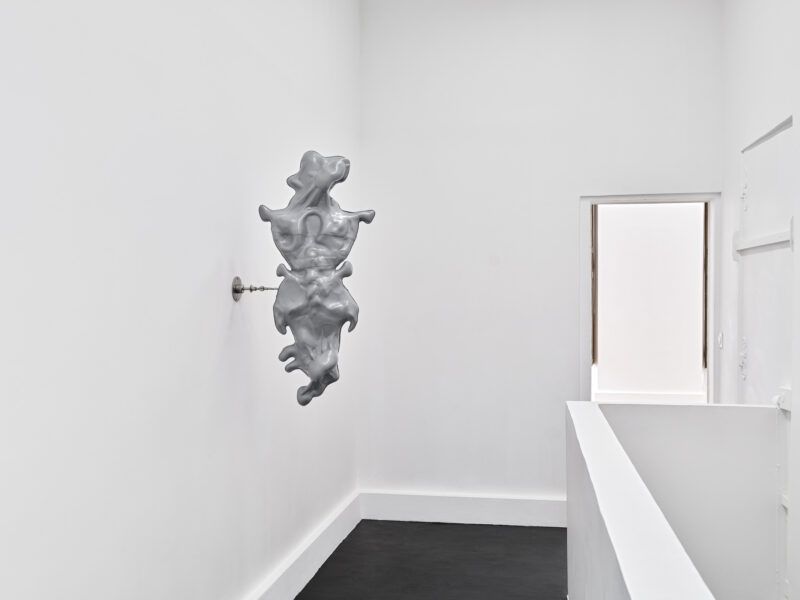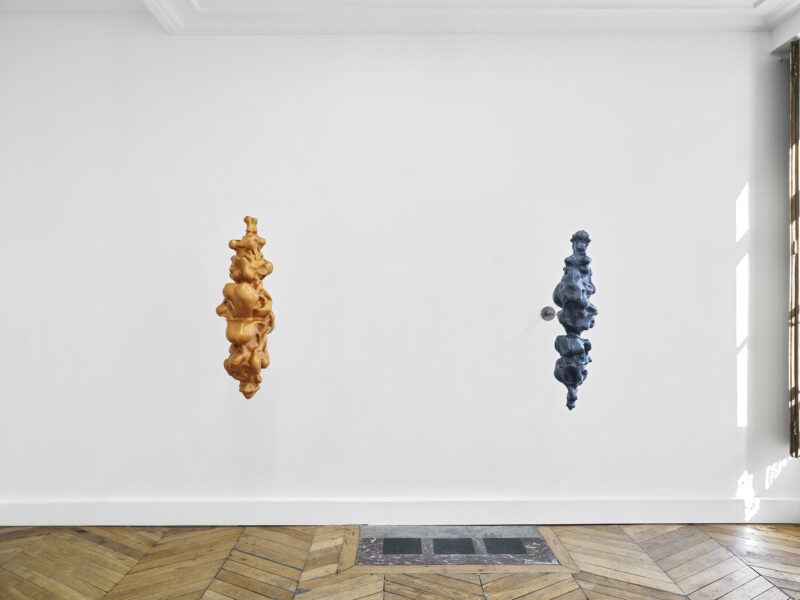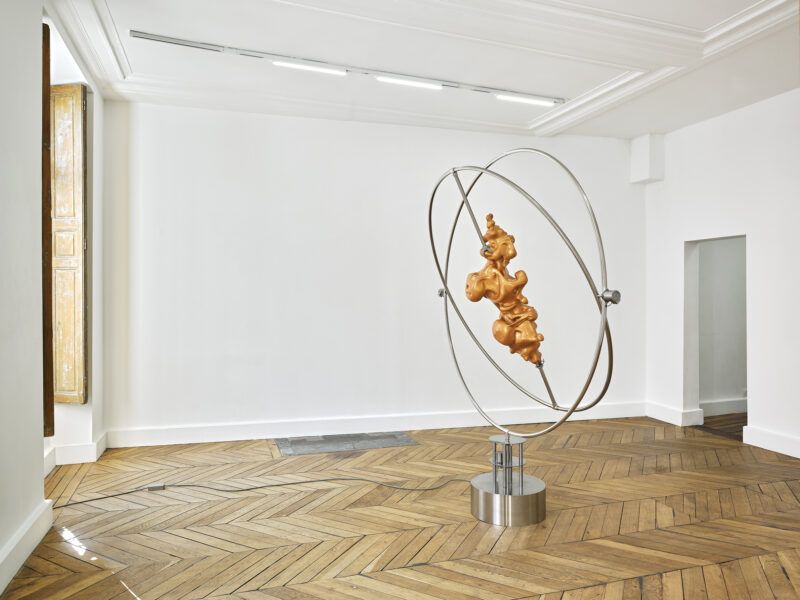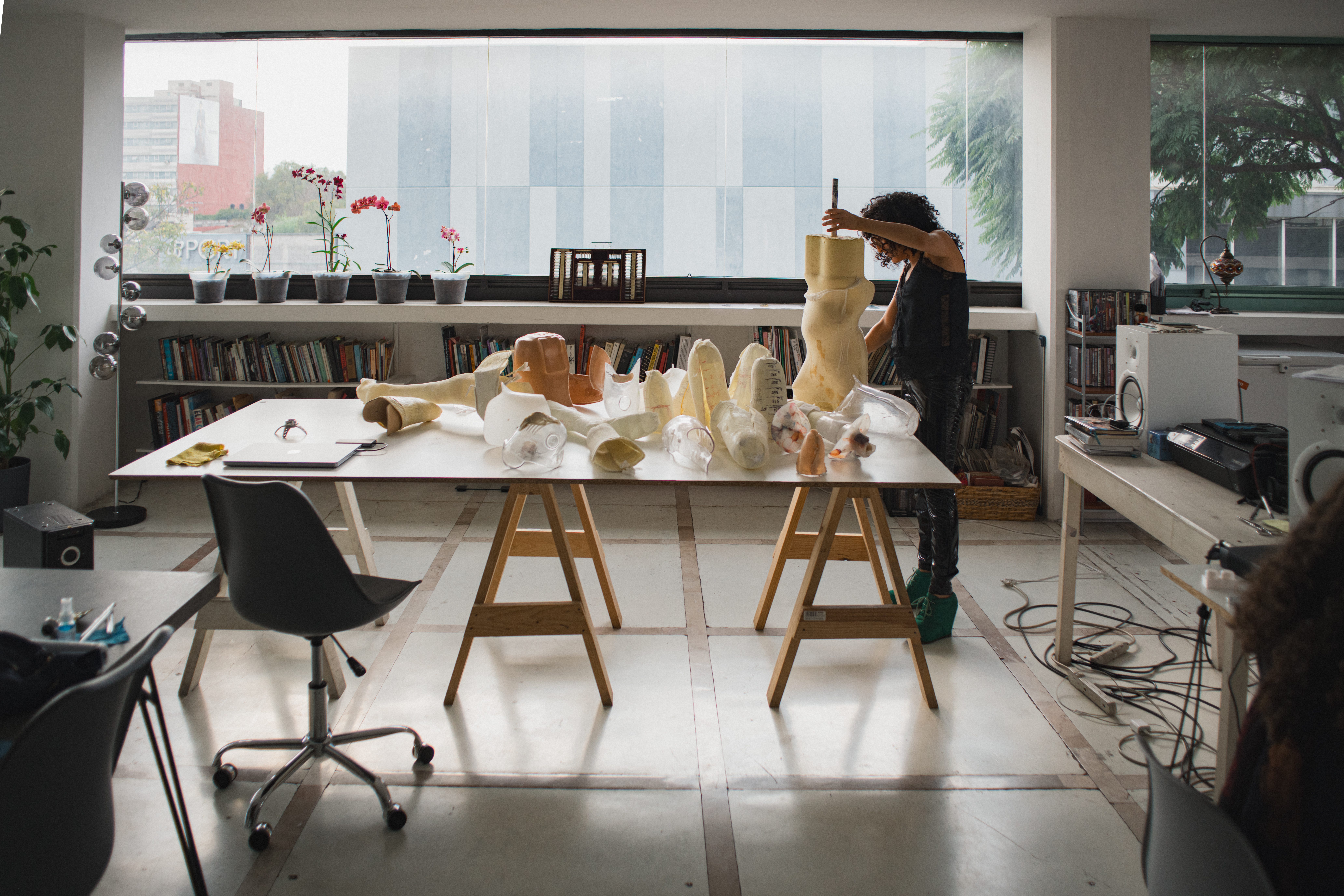
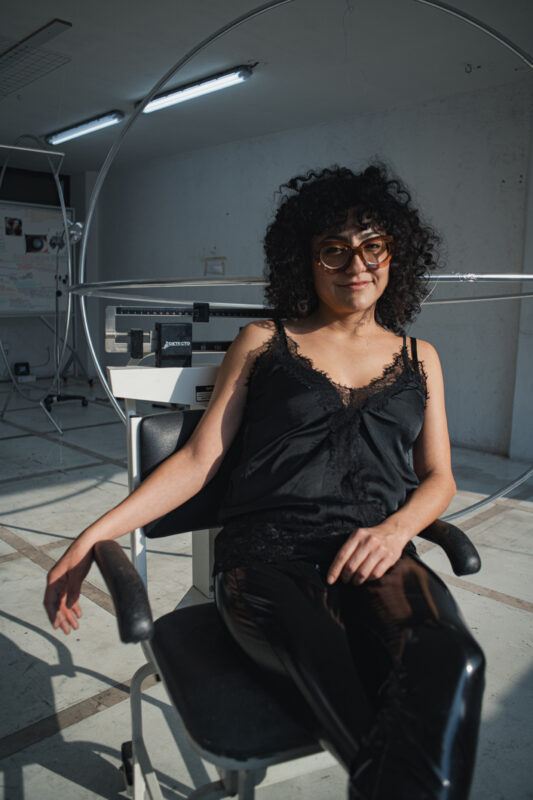
In the Studio
Berenice Olmedo considers how technology mediates life.
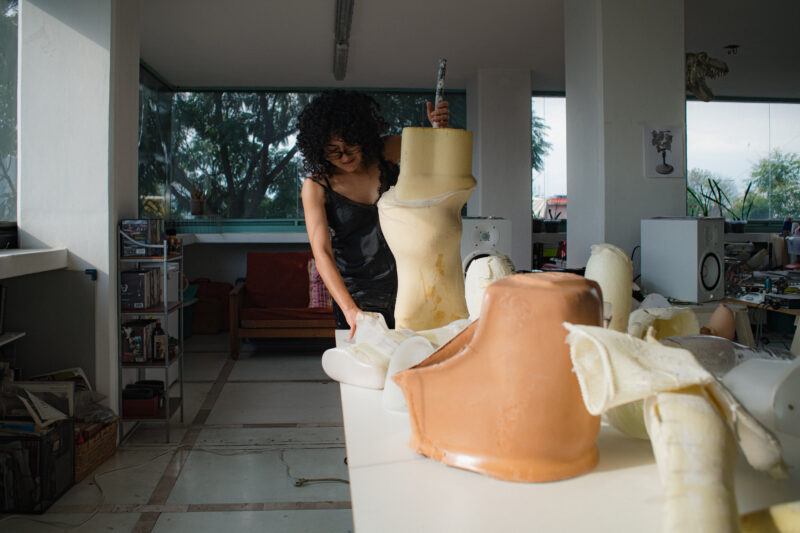


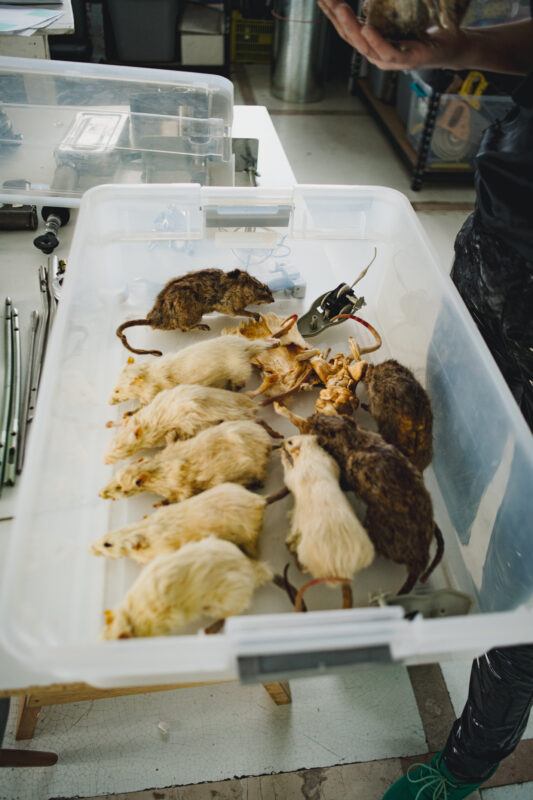
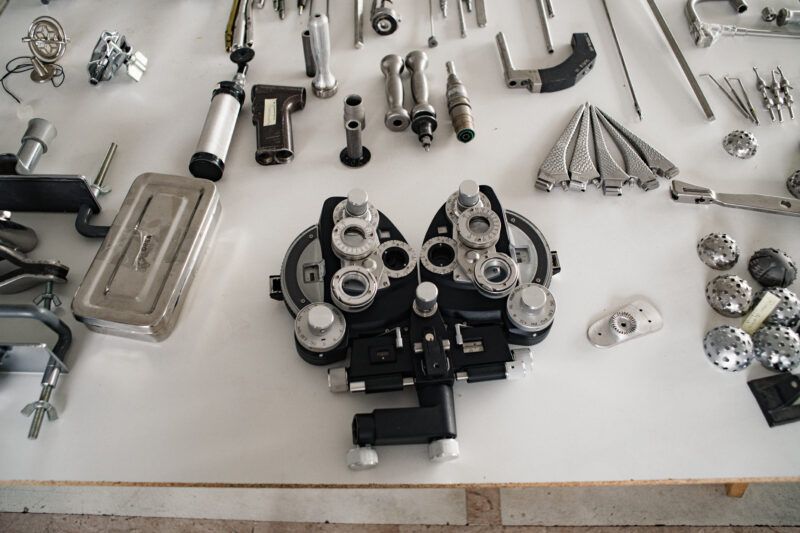

Camila Palomino—You currently have several projects and exhibitions upcoming. I feel like your works are united by a sensitivity to thinking about the body mediated by technology, taking matter and scientific and medical processes to create metaphors that deepen the understanding of the systems that control and support the body. How do you define technology, and what are the technologies you are thinking about at the moment?
Berenice Olmedo—Beyond the fact that the body is mediated, I consider life itself to be mediated by technologies. I consider technology from its etymological meaning, logos of the technê, a know-how, it is practical knowledge. As practical knowledge, I consider walking upright a technology—writing and speaking are also technologies. In this way, I consider life to be mediated by medical, pharmaceutical, political, social, and economic technologies. There is an interesting paradigmatic case, which is organ transplants, because this is a decisive threshold at which death has to be clinically determined, but life is also artificially prolonged. That is to say, when an organ transplant is performed in cases where there is brain death, the pumping of the heart must be artificially maintained and assisted with mechanical respiration so that the organs can continue to stay alive and be transplanted. It’s a sort of threshold, and that’s where I see most clearly that technologies mediate life and death.
The technologies I am currently using are medical software for image segmentation normally used to visualize tumors, cancers, or internal prostheses through tomographies. I am also using 3D modeling and printing while working with orthotic plastics: a low temperature plastic used to produce orthoses1.
What has been your entry point to learning how to manipulate these technologies and materials?
The first relationship with the materials is an encounter. I usually work as a scavenger, searching through the garbage and waste from orthopedic workshops. I begin my search in flea markets, or second-hand places they call chácharas here in Mexico. For example, the silicone liners I used in my project Hic et Nunc (2022), how did I find them? I didn’t even know they existed! There is a fundamental phase when I am working hand-in-hand with experts in their fields. I ask for their opinion, not only regarding materials, but also about the pathologies they have known. Because it is not my field, I need a background, a horizon from which to start to conceptualize the idea of a sculpture or a project.
When I am looking for a material, I don’t even know what I’m looking for. I ask for suggestions, I ask, for example about which flexible materials they might know. That is one path. But the other path is that of chance, a random surprising encounter. What happens among the waste? I’m always staring at the floor. The material I used for Hic et Nunc was a piece that I found lying around, a small and flexible rectangle, and when I shook it, it had the properties and behavior of the material I was looking for. I asked Rogelio Soto, the orthotist with whom I was working, and he told me that it was part of a liner. Sometimes even the experts I work with are surprised and do not suggest a given material because they think it is not what I am looking for. Anyway, going back to the piece I found, he told me it was an internal coating that is used in prostheses, especially leg prostheses. It prevents skin lacerations, and that is why it is flexible and made of silicone —so the user has fewer wounds caused by friction with the prosthesis. Rogelio did not have enough material to show me, so he took me to his friends Erick Lemus and Alberto Soberanes who are also prosthetists and orthotists, and they were the ones who described the brands and types of liners; some had a cream-colored coating, and others were totally transparent. That was my first contact with silicone liners. From there, prosthetist Cristina Picazo lent me several liners for testing and analyzing the material. I recorded videos of how it folds and unfolds.
How does that analysis of materials aid in the development of your projects?
The first phase is a random and involuntary encounter. Then comes the technical part. I need to know the properties of the material, to understand how—hypothetically—it will behave. There is a shop here in Mexico City, where I usually go to buy orthopedic material. They supply or sell to various orthopedic workshops. I go and I look, take pictures of the brands, and start to download the orthopedic catalogs to see what might have potential. In the case of Orfit, which is a low-temperature orthotic plastic, we ordered it from the United States because in Mexico we only found it with microperforations which are functional for patients because it allows their skin to breathe.
I had to review everything with my art producer Eduardo Ortiz, the technical specifications, to plan how we were going to work. The user manual said that the material works, or rather, becomes flexible at 65 degrees Celsius. So, when the material arrived, we used a tub as a container for hot water, measured the temperature, and did the first test. But something always happens—because at the end of the day this plastic is technology—and there is a resistance by machines or technologies to being hacked. That means that machines can only perform the function for which they were designed.
So even though the user manual for this material said that the plastic could be worked with at 65 degrees, because it is used to make splints on people who are alive, it did not work for the sculpture. I wanted to use it as a surface or coating for a 3D print that is inert, so we had to test temperatures, and we even thought we would work the sculptures underwater. Ultimately, instead of forcing the plastic to conform perfectly, we let the material behave based on gravity and weight.
So, the user manual is one thing, and what ends up happening when using the material for something it was not intended for is another.
Your next project considers optometry and eye health as an allegory for surveillance devices in society. Within Western medicine in particular, vision has long been prioritized as a means of constructing knowledge. How do you address systems and scales of vision?
Something I am interested in is what Forensic Architecture2 calls the visibility threshold. What can be captured or recognized as existing is determined by the limitations imposed by technology. So, I thought that what is really at the center is precisely the vision, that is to say, I want to consider from the root: what is vision or what does it mean to see? I believe that to question the image we also have to question the technologies that produce it—sight must be demystified. When I thought of biometric identification as a metaphor for optometry, it was because there is a deficiency in the system of vision that implies high margins of error in facial recognition, and that has discriminatory effects. I was reading about various software, especially those that support race and gender biases, and depending on whether or not you are a person of color, you are more likely to experience arbitrary arrests. There may also be difficulties in the software’s ability to recognize gender.
On the one hand, optometry studies defects in vision and on the other hand, I see irregularities in vision that are inherent to the system of biometric identification. I decided to use a keratometer, an optical device that studies the deformation of vision to think about problems and irregularities of a visual system. I found one in Mexico from 1950 and it looks like a weapon of destruction.
For the project at Kunsthall Trondheim, this keratometer will be arranged at the height of a surveillance camera and will project cataracts. Thinking and reflecting on problems with eyesight or vision, cataracts are an opacity in the eye that creates diffuse images and causes vision defects due to a deformation of the cornea, an issue that has to do with light dispersion and that makes the retina unable to focus images. So, the keratometer will project this to think about how images are generated.
- An orthoses is a device designed to improve biomechanical function, encourage proper joint alignment, or protect an existing limb.
- Forensic Architecture is a research group based in London that investigates human rights violations, employing a variety of traditional and unorthodox methods of analysis and investigation.
